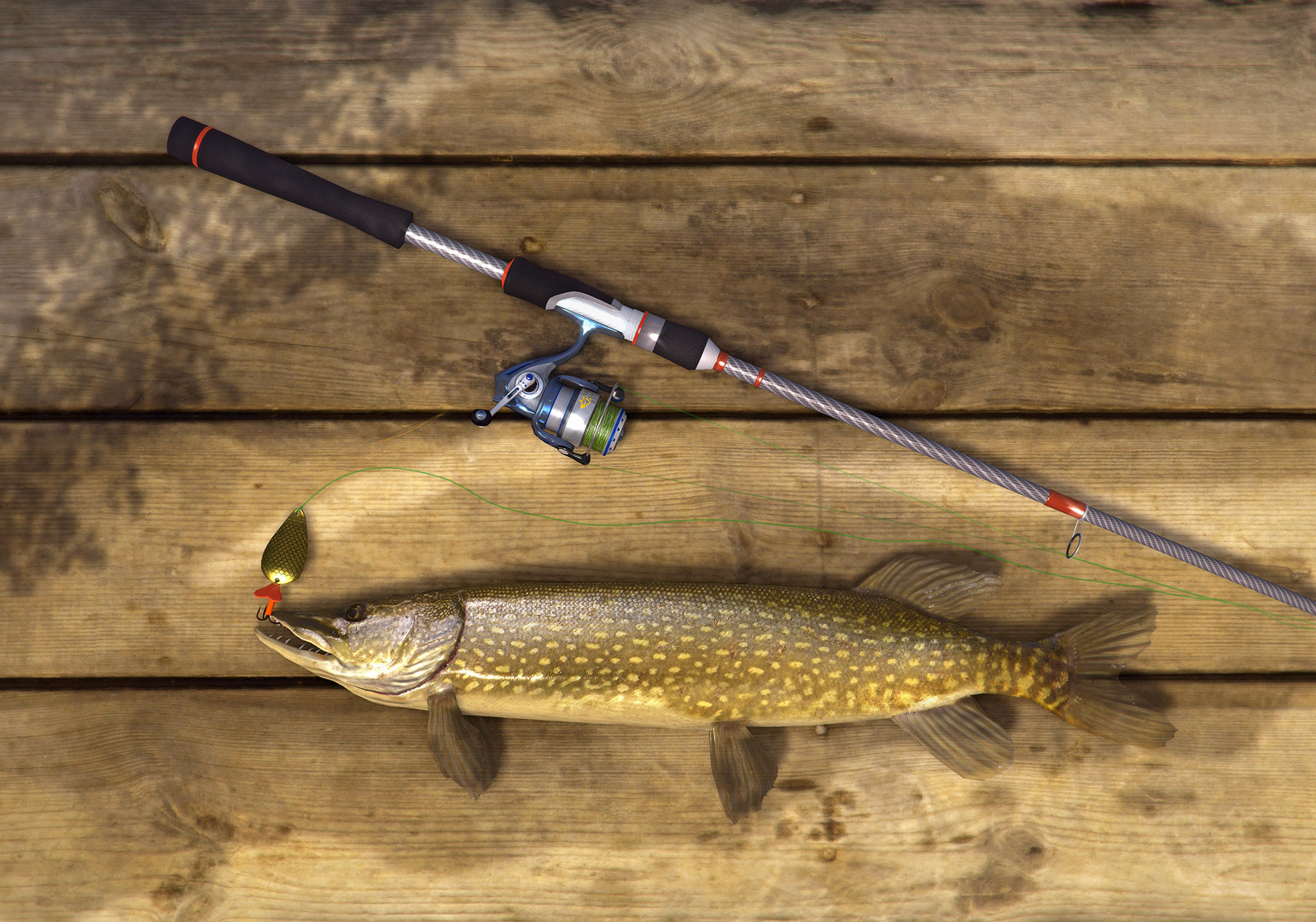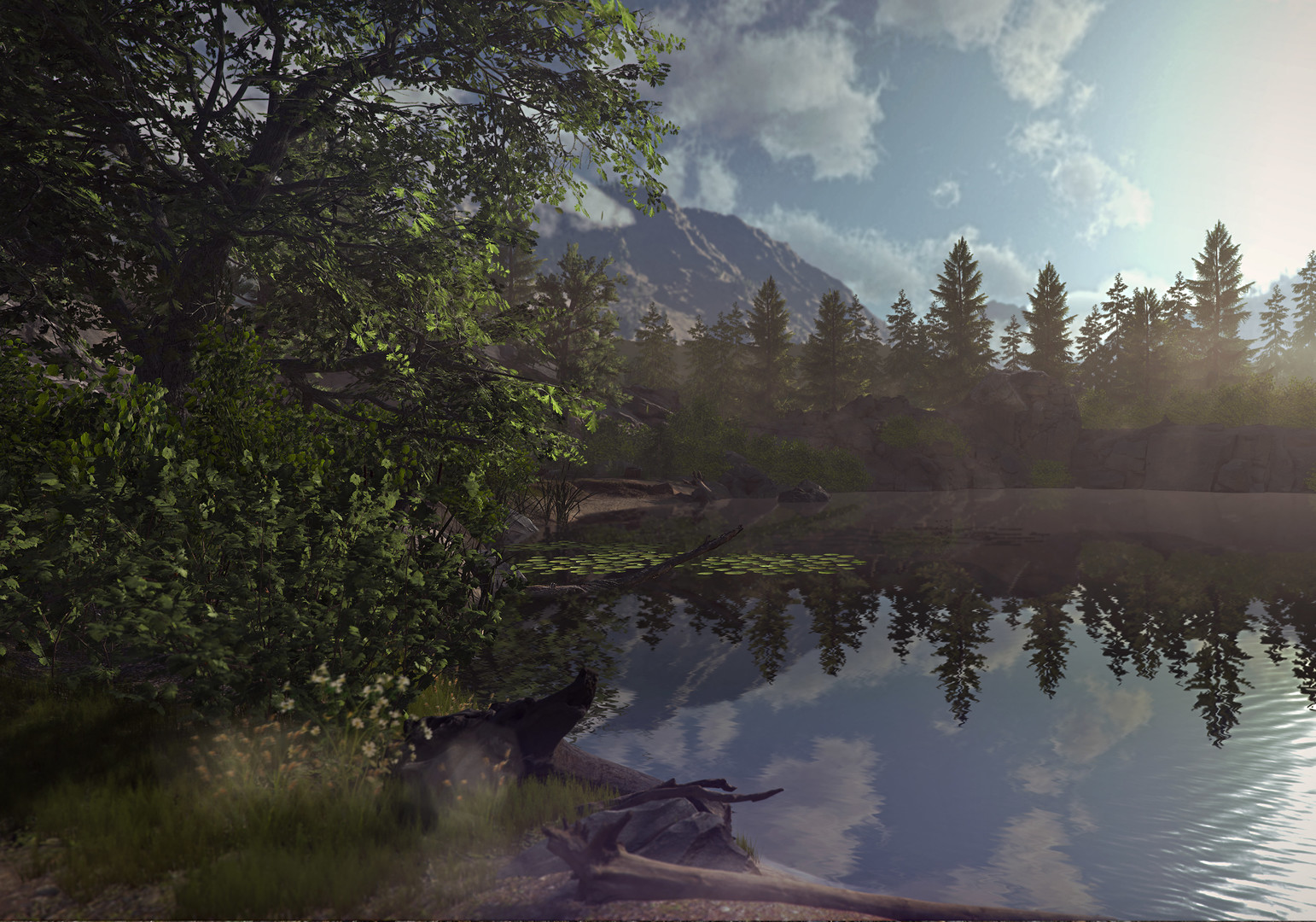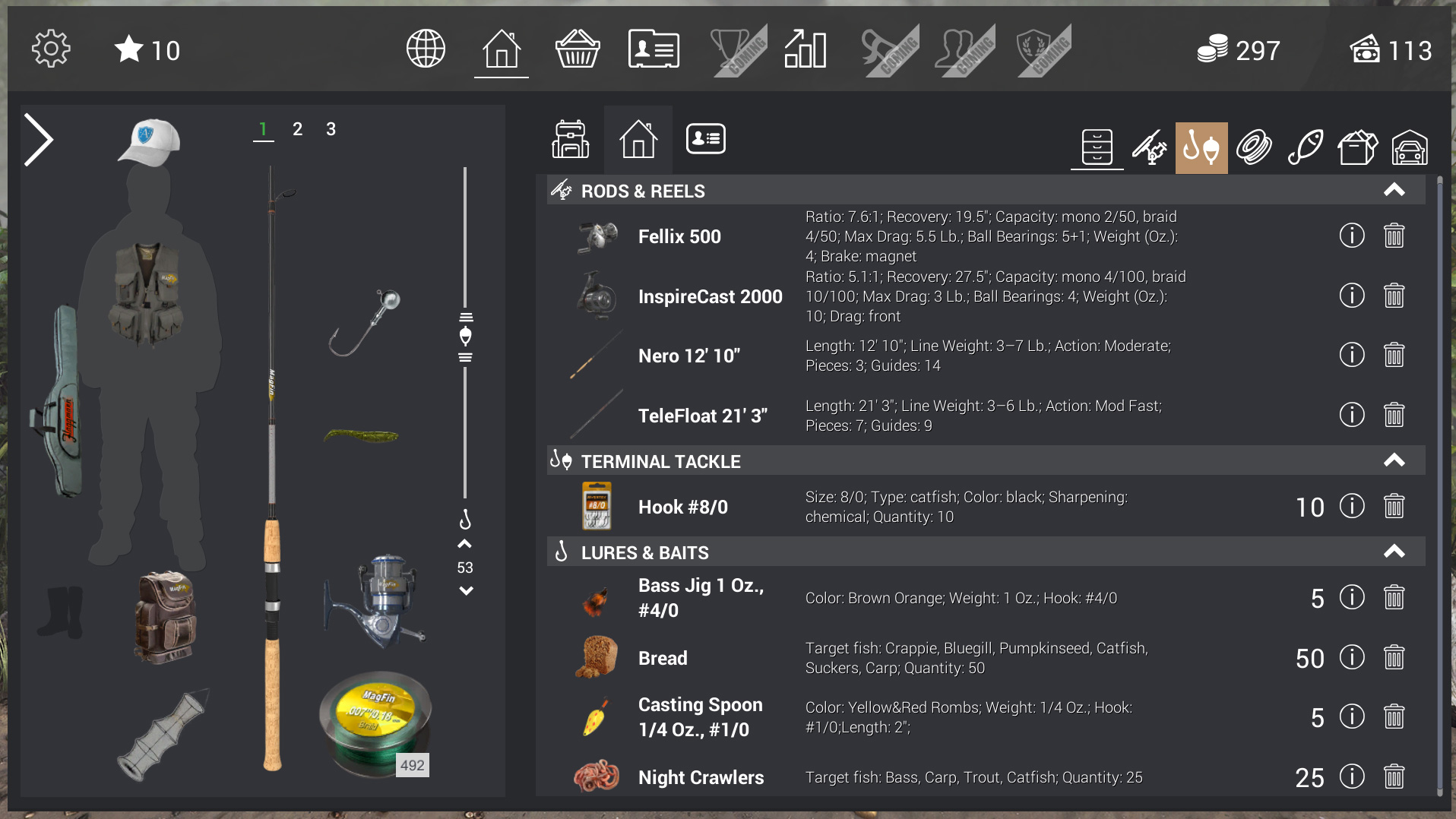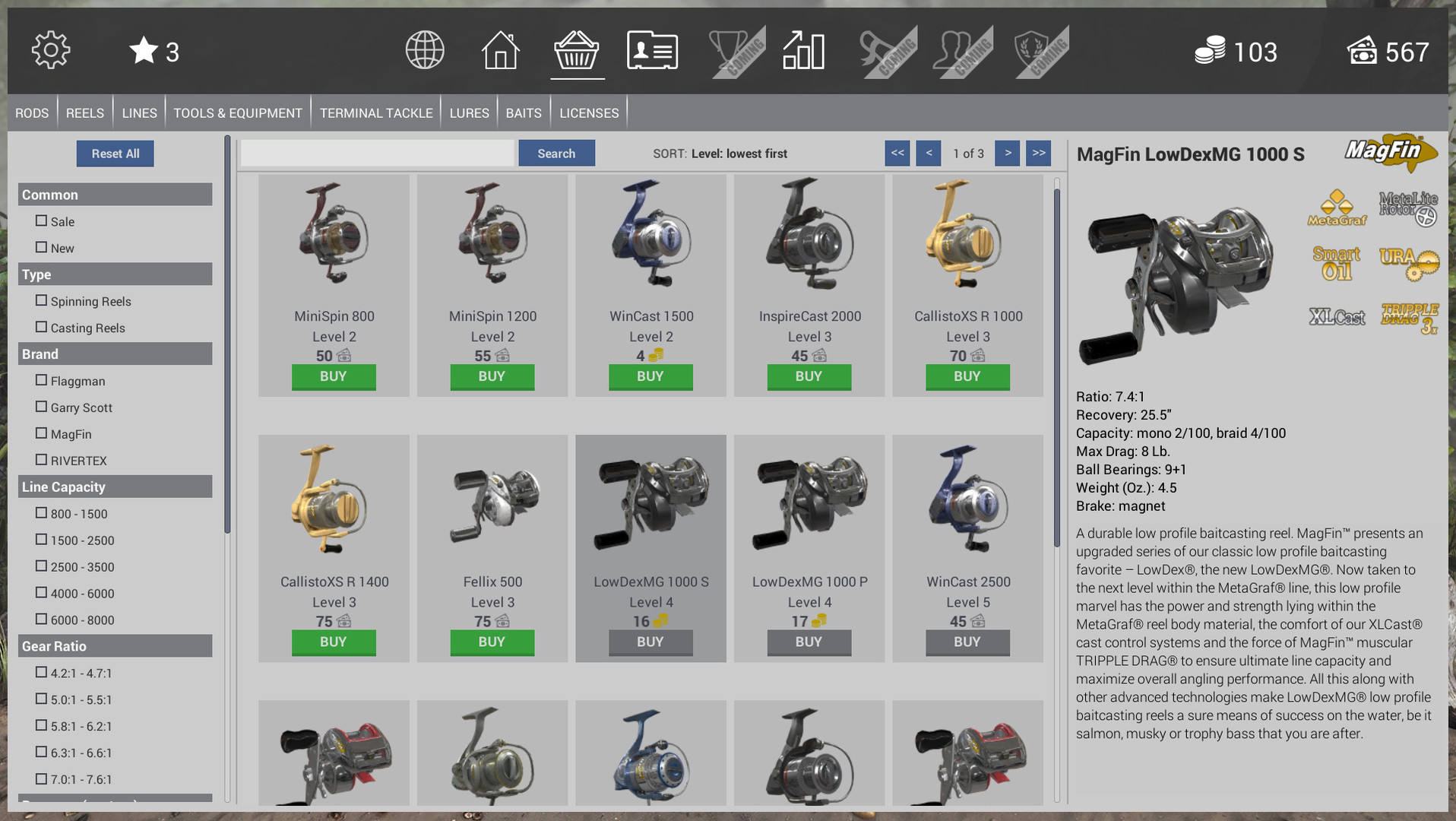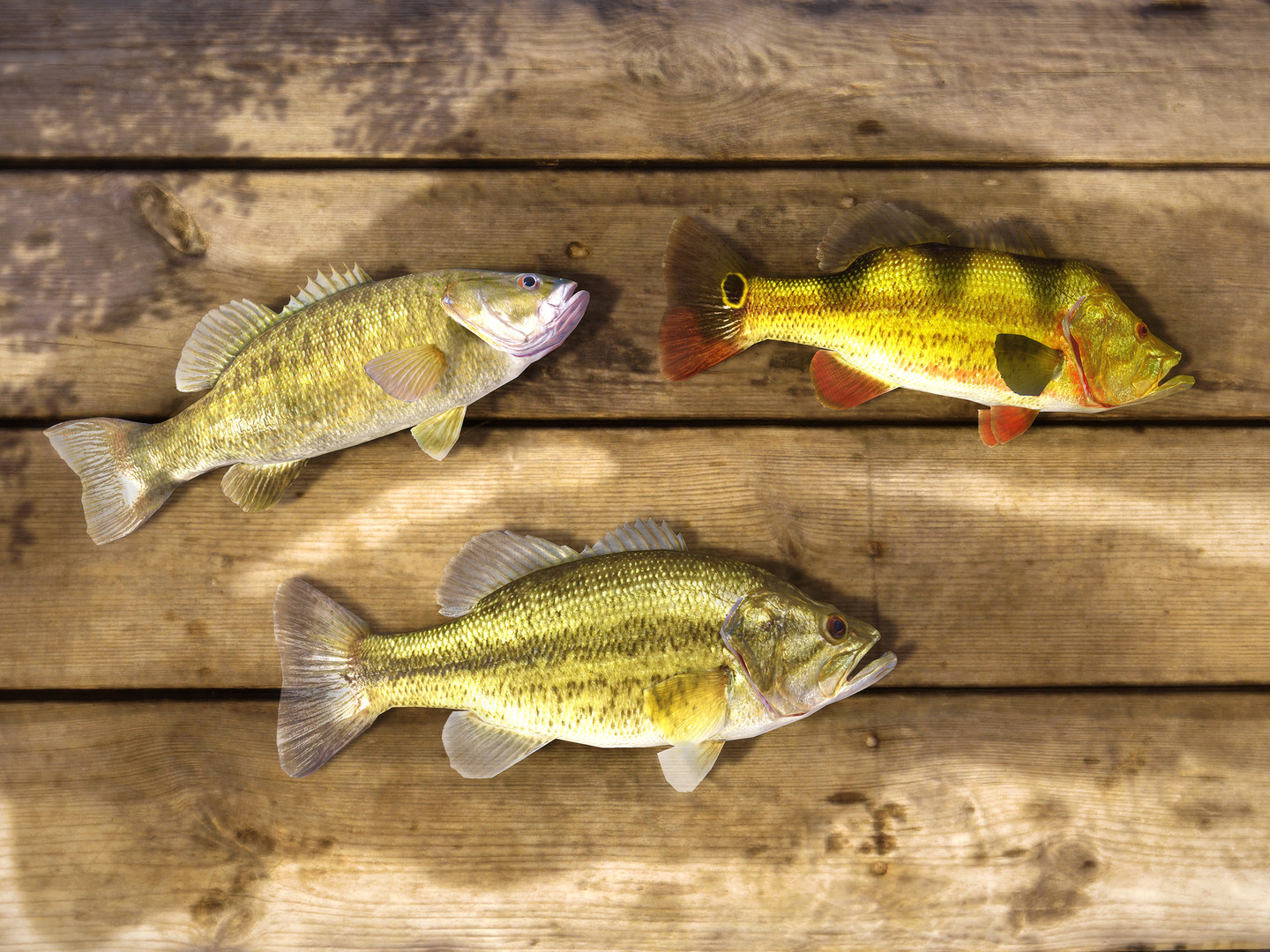The game is FREE to play and just a download away!
Aside from a rare few, there were no decent fishing games created over the whole 30-year history of game development. And not a single one in recent years! Don’t we anglers deserve better than that?
Fishing Planet decided to set this historic injustice right and finally make a game that fishing enthusiasts were waiting for all these years! And according to our Beta Testers, we hit the mark!
Fishing Planet isn’t just another game about fishing. Stunning eye-candy graphics, superb hydro and aerodynamics, realistic tackle behavior and damage based on actual simulation physics and, most importantly, fish with artificial intelligence for completely lifelike behavior make this a true-to-life fishing simulator that can help you improve your actual angling skills!
The combination of unique graphics, realistic game physics and sophisticated AI will bring the realistic world of fishing directly to your computer screen!
Key features:
- 32+ species of fish, each with its unique behavior and AI.
- 7 scenic waterways with multiple locations, various climatic conditions, bottom terrains and vegetation.
- Thousands of tackle combinations with unique physical and hydrodynamic properties.
- Superb dynamic water graphics with ripples and surface that changes depending on wind, current and depth.
- Weather – day/night alternation, change of seasons, different weather conditions (rain, fog, bright sunshine)
- Multiplayer capacity – online tournaments with personal and team scores, system of achievements, leader boards and top-player lists.
What makes us different:
- Complex AI system for fish behavior that correlates with seasonal and climatic change, time of day, speed of water current, bottom contour and type (color and structure), water and air temperature, wind, etc. Biting/striking reactions for each fish species are completely realistic and natural as well as specifics of lure attacks.
- Photorealistic graphics – using latest high-end tools for ultimate photo-realism: photogrammetry, all waterways are based on real location.
- Unique system of game physics and realistic tackle damage – rods, lines and reels break according to their actual individual characteristics. Realistic aero and hydrodynamic environment for lures and retrieves.
- Dynamic water graphics – splashes, waves and ripples on the water create a fully realistic fishing atmosphere.
- Weather – change of conditions depending on location, season and time of day. Possibility of sudden rain or sunshine breaking through the clouds.
- Tournaments and fishing duels – created based on world’s most popular fishing competitions.

Welcome to Brazil!
You are in for an unforgettable tropical adventure in the maze of islands and canals of Amazonia!
You can find out more useful information about the new location in our Dev's Diaries .
New maximum level 70
9 different locations, each with distinct atmosphere:
Stone Flower

If you travel further to the center of the maze of waterways and canals, you will find a rocky plateau. For thousands of years the river has been smoothing and polishing the stones, transforming the shore into a flat platform, ideal for swimming and fishing. Huge boulders protect the plateau from the wind and add to the pleasant atmosphere of seclusion. By the way, the water is deep, so enter with caution!
Rio Grande Hotel

It seems that this picturesque backwater area was specifically designed for watching beautiful sunrises and sunsets! The primordial beauty of this deep-water bay has certainly been instrumental in establishing a popular floating lux hotel. Take a look at the floating deck, where you can take pleasant walks, and the convenient landing pier.
Orchid Shore

If youre looking for a perfect place for some solitude and contemplation, head straight to the wild orchid garden in the northern part of the river maze. The air here is heavy with the unique fragrance of tropical flowers. The orchids bloom right on the submerged trees peeking out of the water. This shallow bay is home to many fish species that prefer still waters.
Abandoned Temple

Ruins of a small catholic temple are visible on the edge of the island in the eastern part of the Rio Negro maze. In the olden days churches were built to last forever, and this one is no exception decades of desolation later, its walls still hold against the encroaching jungle. Even the locals cant remember why the church was abandoned, but one has to agree that the ruins look very atmospheric.
St. Sebastian Church

An example of modern-day Catholic architecture, St. Sebastian Church can be found in the very middle of the river maze. Most times its incredibly quiet and calm here. The church only becomes busy on Sundays, when boats bring local Catholic believers from all over the area for the mass. You can just about see a convenient landing pier nearby.
Mboya Village
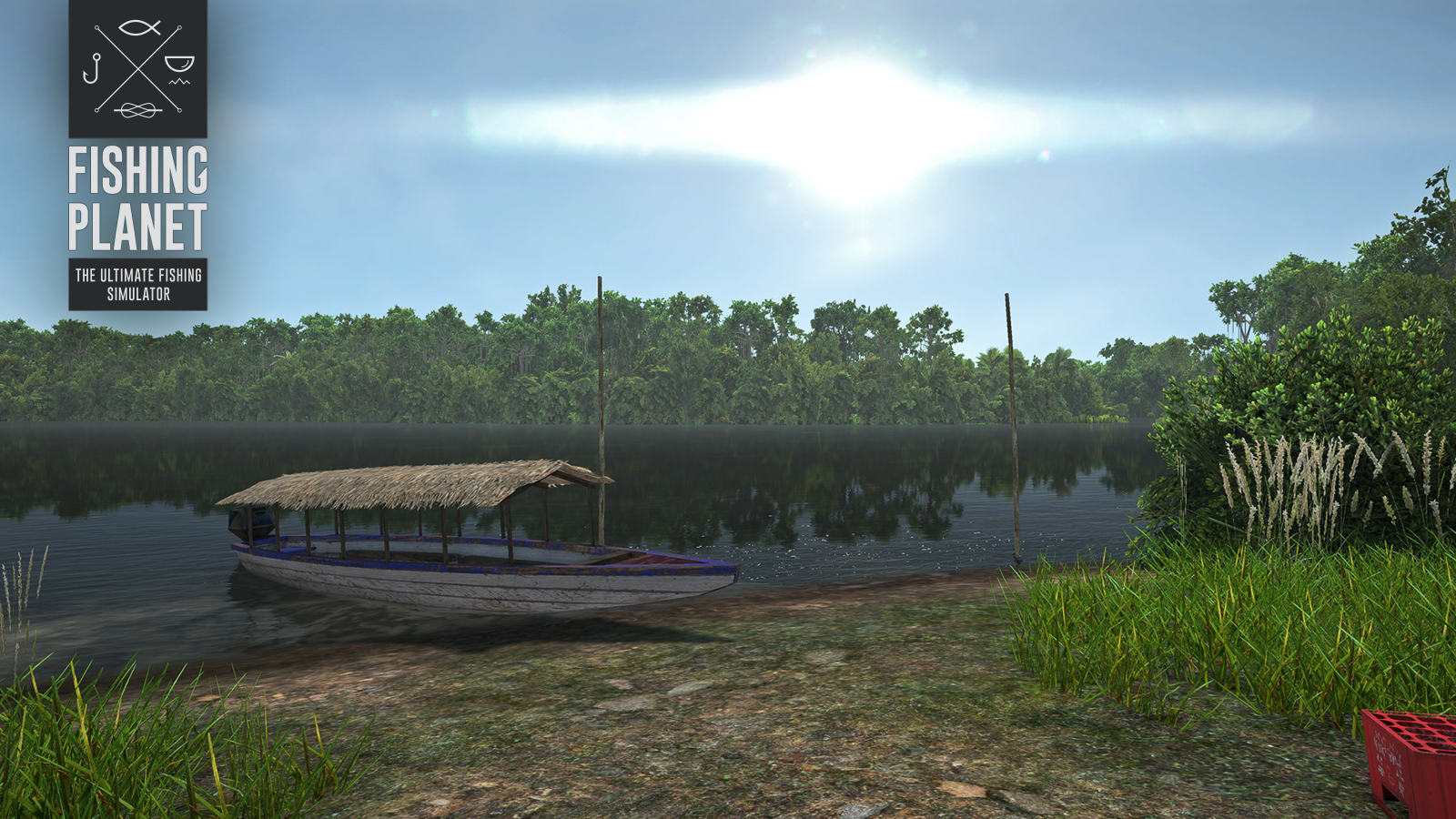
This settlement is located on the long strip of land that very much resembles a snake tail. This might be why it is called Snake Village in the local language. Or maybe its because of the abundance of reptiles around? In addition to several fishing huts with thatched roofs, the village also has a church with a tall wooden cross in front of it to mark the gathering place for local celebrations and Catholic masses. The river is rather deep here, with tall palm trees growing along the banks.
Acanga

In the eastern part of the tributary, there is a remote islet with a wooden carved statue in the middle, that locals refer to as "Acanga". Most Brazilians are Catholics, but some people still practice shamanic cults in the midst of the rainforest. Peculiar carved stones, shrines, statuettes of gods and skulls of sacrificial animals clearly signify a place of religious worship. Entering such a place, try to be respectful and not disturb the local shamans and spirits!
Stilt Hut

This lonely wooden dwelling looks long abandoned. Alternatively, its owners really dont have time for refurbishing it. Given the stilts it might be a fishing hut: the locals probably keep their tackle here, or even use it as a fishing spot, to hunt for species who inhabit shallow waters overgrown with reed.
Giant Palm Tree Beach

After exploring infinite jungles or rocky banks, how refreshing to see a beach with beautiful white sand! One can notice giant palm trees on the other side of the beach, which gave this place its name. Cozy summerhouses with palm leaf roofing are visible not far away from the shore. If you look at the water long enough, you might see a river dolphin or a small river cruiser. Local anglers say deep waters and peculiar riverbed have made this part of the river a favourite spot for large catfish.
6 new unique Amazonian fish species
Take in a lungful of the thick humid air of the jungle and be ready for a fast-paced fishing adventure, because the fish is phenomenally feisty and large:
the hefty Orinoco Bass, 
Orinoco Peacock Bass (Cichla Orinocensis) is a large species of Peacock Bass native to the Rio Negro and Orinoco River basins in South America that usually prefers to inhabit slow-moving blackwater rivers.
These fish are easily distinguished by their tropical coloration: golden shimmering bodies with large dark spots on the sides and a blueish dorsal fin. Orinoco Peacock Bass can reach up to about 2 ft. in length with a maximum recorded weight of around 11 lb.
the aggressive Bicuda, 
Bicuda (Boulengerella Cuvieri) is a South-American freshwater fish native to the Amazon region, inhabiting its many tributaries as well as other rivers throughout the countries of the continent. These fish tend to stay close to the surface in areas with rapids and strong currents, hiding behind debris, logs, and rocks.
Bicudas have long, gray pike-like bodies with elongated reddish tails and sharp, comb-like teeth. Fully grown specimen usually reach a maximum weight of 13 lb, and up to about 2.9 ft. in length.
the massive Piraiba catfish weighing up to 330lb,
Piraiba (Brachyplatystoma Filamentosum) is the largest Catfish species found in South America. It inhabits the Amazon and Orinoco basins, where it thrives in both freshwater and brackish habitats.
Piraiba have elongated bulky silvery gray bodies with white bellies, which makes them look a little bit like sharks. They are easily distinguished by long barbels and red markings on the lips. But Piraibas key trait is their truly enormous size, with a maximum recorded length of 11.8 ft and a record weight of over 441 lb.
the incredible Electric Eel, 
As you can figure from its name, this eel can generate a strong electrical charge. This helps it to not only attack its future prey but also successfully navigate its way in muddy waters. Thanks to an organ called the Weberian apparatus electric eels also have excellent hearing: you will have to try hard if you want to sneak up to this fish.
Banded Aracu
is a fish species most often found in South American waters (the Amazon and Orinoco basins). These small and swift schooling fish prefer to inhabit fast-flowing rivers. During the wet season they also thrive in flooded forest areas.
the Bull Shark, which adapted to the freshwater environment and whose weight can reach up to 440lb! 
These sharks prefer to hunt in muddy waters on their own, sneaking up to the prey and dashing suddenly before the attack. There have been attacks on humans, so be extremely cautious around its habitat!
Try thousand-year-old life hacks from local anglers: lures and baits like Blue-Winged Grasshopper or Giant Silk Moth Larva. Check out the varied coastline, the difference in depth and the unparalleled Amazonian nature.
The unique form of the 6-feet-long of Arapaima added

Arapaima are air-breathing fish that depend on access to surface air.
These fish have long, torpedo-shaped bodies covered in black-green scales with red markings. Its dorsal and anal fins are situated closer to the tail. Arapaima are usually about 6.5 ft. in length, with some specimens growing up to 10 ft. in length and weighing as much as 440 lb!
The diet of the Arapaima mostly consists of fish and crustaceans, but these enormous creatures can sometimes devour land animals that happen to be near the shore.
Fishing in Amazonian Maze you will have a chance to catch the biggest form of Speckled Bass in our game.
New Tackles
- Rodster rod cases set

This Rodster rod case set is a capacious and reliable novelty from the creators of the best fishing gear at MagFin. With this rod case youll be sure that the tackle is safe and sound: sturdy nylon and a durable zip fastener guarantee safety while fishing and when transporting your gear. The cases come in several sizes, and whats more important, they sport special pockets for your extra reels and lines!
- Whoa tackle box set

Anyone seeing this tackle box set is bound to go Whoa. And when you open it, youll definitely be surprised, because its capacity allows you to keep all the necessary fishing necessities in one place. The numerous sections and slots for your tackles, lines, reels and groundbaits are arranged in such a way as to help you quickly and easily find whatever you need this exact second. The experts at UL-CHUBER made this wonderful box capacious, sturdy and available in several sizes!
- Pocket Boss

This Pocket Boss Vest by MagFin will keep you safe from the wind, and your tackle from any excess humidity! Thanks to its multiple pockets you will always have up to 50 pieces of tackle and 7 lines at the ready. And whats more with this vest youll be able to bring up to 3 groundbait components with you! This exclusive item is made of innovative nylon AquaStop and comes in all sizes, XS to XXL.
- Vestern Pro

This amazing waistcoat by MagFin is truly a great find for real pros. Rain or shine, this amazing garment will be of tremendous help to you, since it can comfortably hold 55 pieces of tackle, 5 lines and even 5 groundbait components! The material allows it to achieve optimal thermal control, keeping the warmth in when its cold and out when its hot. This is exactly what you need to have an enjoyable and fruitful fishing experience!
We also added new large keepnets and stringers that you have been waiting for.
New Baits
- Blue-Winged Grasshopper
 The Blue-Winged Grasshopper is so huge that many mistake it for a locust. Its bright wings are great at attracting surface-dwelling fish, such as Apapa. At the same time its weighty enough to be used for distance casts.
The Blue-Winged Grasshopper is so huge that many mistake it for a locust. Its bright wings are great at attracting surface-dwelling fish, such as Apapa. At the same time its weighty enough to be used for distance casts.- Giant Silk Moth Larva
 This is a larva of a giant silk moth. Its large, fleshy and bright, which makes it a delicacy of choice for the catfish and other omnivorous fish.
This is a larva of a giant silk moth. Its large, fleshy and bright, which makes it a delicacy of choice for the catfish and other omnivorous fish.- Banded Aracu Minnow
 The Banded Aracu is a small fish inhabiting Amazonian waterways. Its the favorite delicacy of large predators like the huge Peacock Bass.
The Banded Aracu is a small fish inhabiting Amazonian waterways. Its the favorite delicacy of large predators like the huge Peacock Bass.- Amazonian Sardine
 If you want to attract small Amazonian predators like Jacunda or Biara, the Amazonian Sardine is your best choice! This tiny elongated fish makes its carnivorous siblings bite as never before.
If you want to attract small Amazonian predators like Jacunda or Biara, the Amazonian Sardine is your best choice! This tiny elongated fish makes its carnivorous siblings bite as never before.Get your share of the real exotic fishing experience!
Don't miss the Amazon Carnival Pack!
[url=https://store.steampowered.com/app/1200348/Fishing_Planet_Amazon_Carnival_Pack/?beta=0]
[/url]
The best tackle for this part of the jungle for catching REALLY BIG fish: a powerful rod, a reel, lures, gear and a swift twin-engined Bass Boat Sagitta along with 30-day Pond Pass to the Amazonian Maze!
Bobber bites improvements
New bobber bites are now more realistic and diversified.
Miscellaneous:
- The float shaking under the wind
- Waistcoat purchased in local shop appearance fixed.
- The rented boat does not appear on avatar fixed
- The rod stands angle from the 3rd person view fixed
- Double menu tab selection on GamePad version fixed
- Fixed possibility to falling under water on Mississippi
- Minor Issue with tutorial slides fixed
- Various issues in character animation fixed
- Disconnect during interaction with rod stand fixed.
- Improvement of the autoban algorithm (some casual words are not forbidden anymore)
Minimum Setup
- OS: Ubuntu 12.04
- Processor: Dual core from Intel or AMD at 2.8 GHzMemory: 4 GB RAM
- Memory: 4 GB RAM
- Graphics: nVidia Geforce 8600/9600GT (Driver v331). AMD HD 2xxx-4xxx (Driver mesa 10.5.9). AMD HD 5xxx+ (Driver mesa 10.5.9 or Catalyst 15.7). Intel HD 3000 (Driver mesa 10.6)Network: Broadband Internet connection
- Storage: 12 GB available spaceAdditional Notes: External mouse or compatible Xbox controller required
Recommended Setup
- OS: Ubuntu 12.04
- Processor: Dual core from Intel or AMD at 2.8 GHzMemory: 8 GB RAM
- Graphics: Graphics Card with 2 GB Video RAM: Nvidia Geforce GTX 660 or equivalentNetwork: Broadband Internet connection
- Storage: 12 GB available spaceAdditional Notes: External mouse or compatible Xbox controller required
[ 6492 ]
[ 2513 ]
[ 1962 ]


